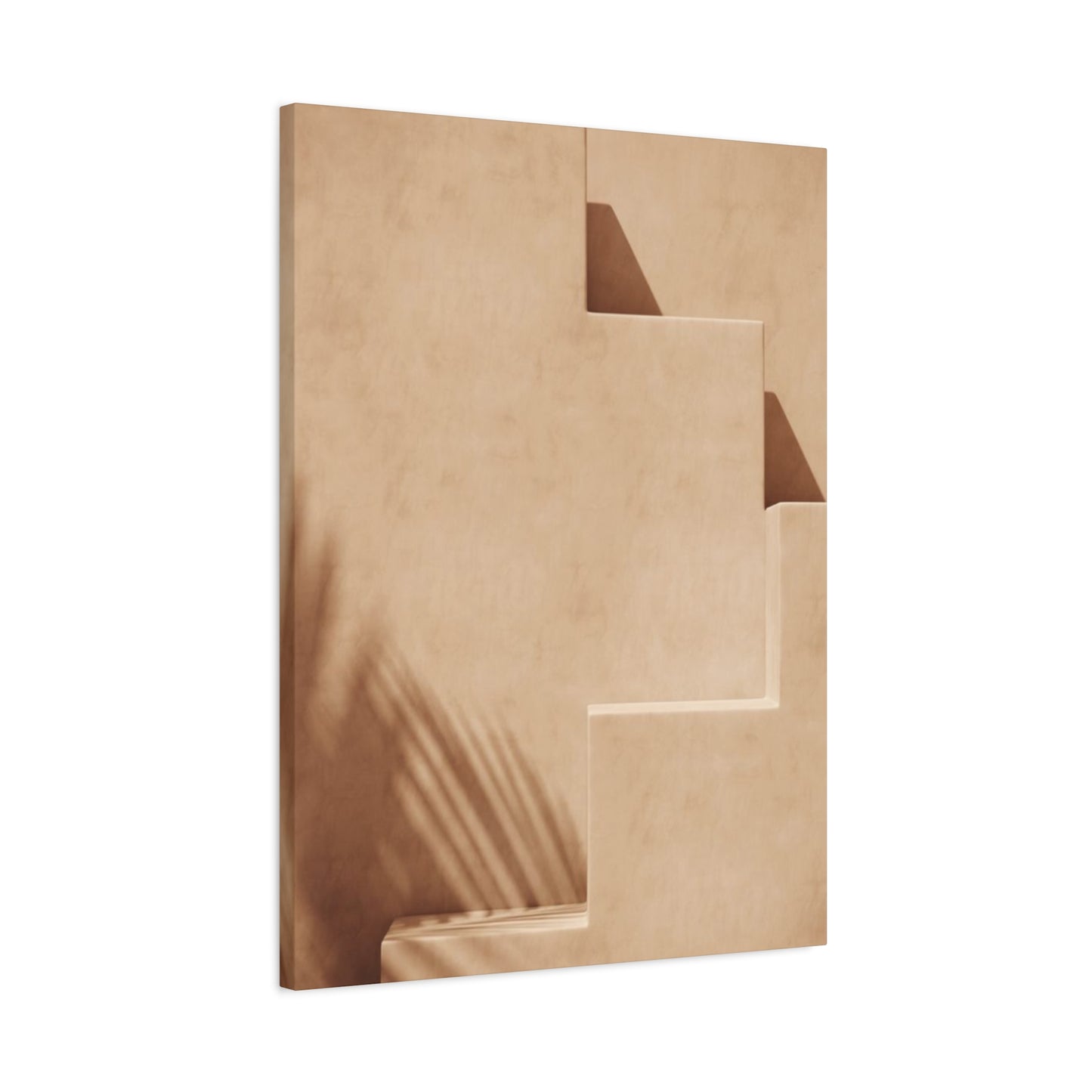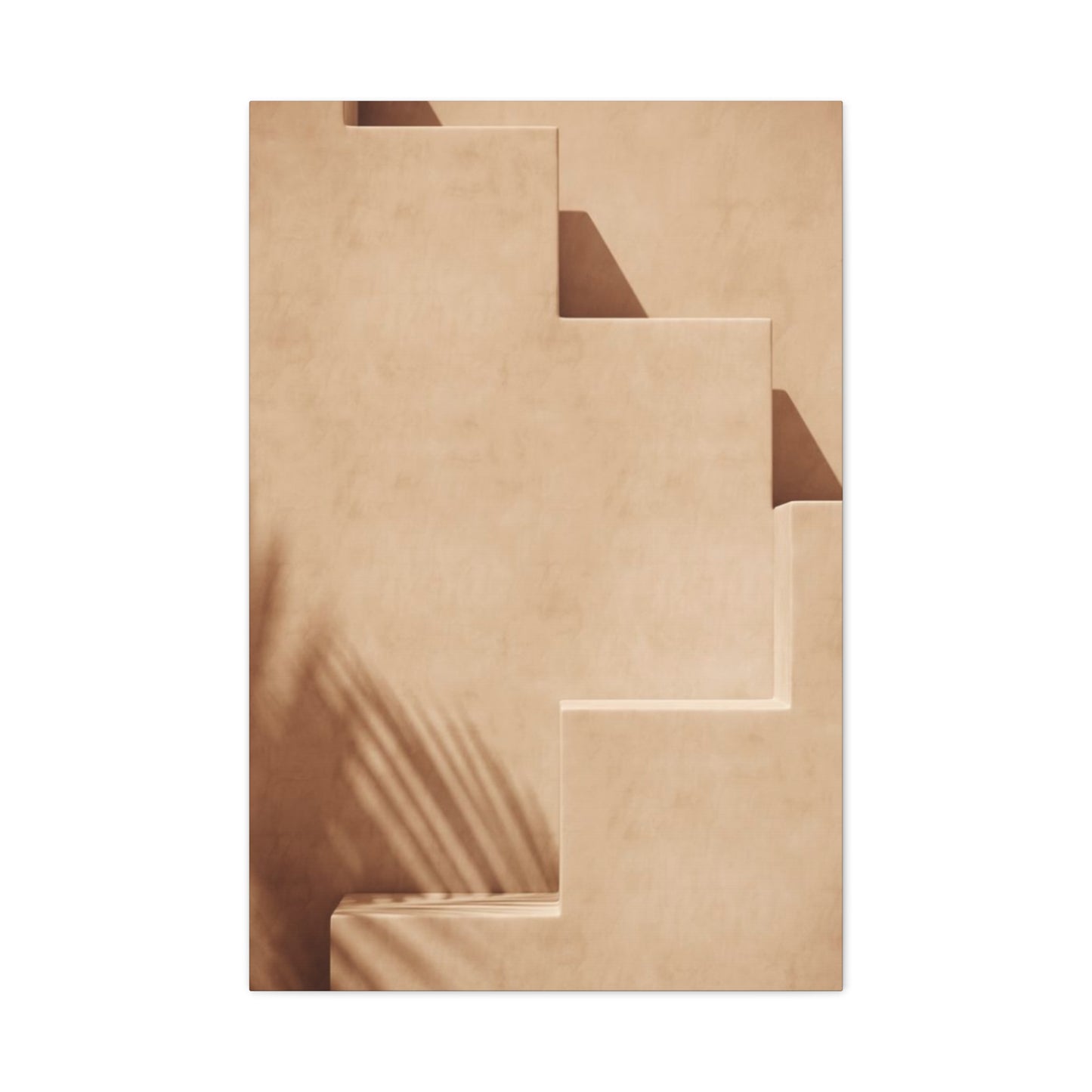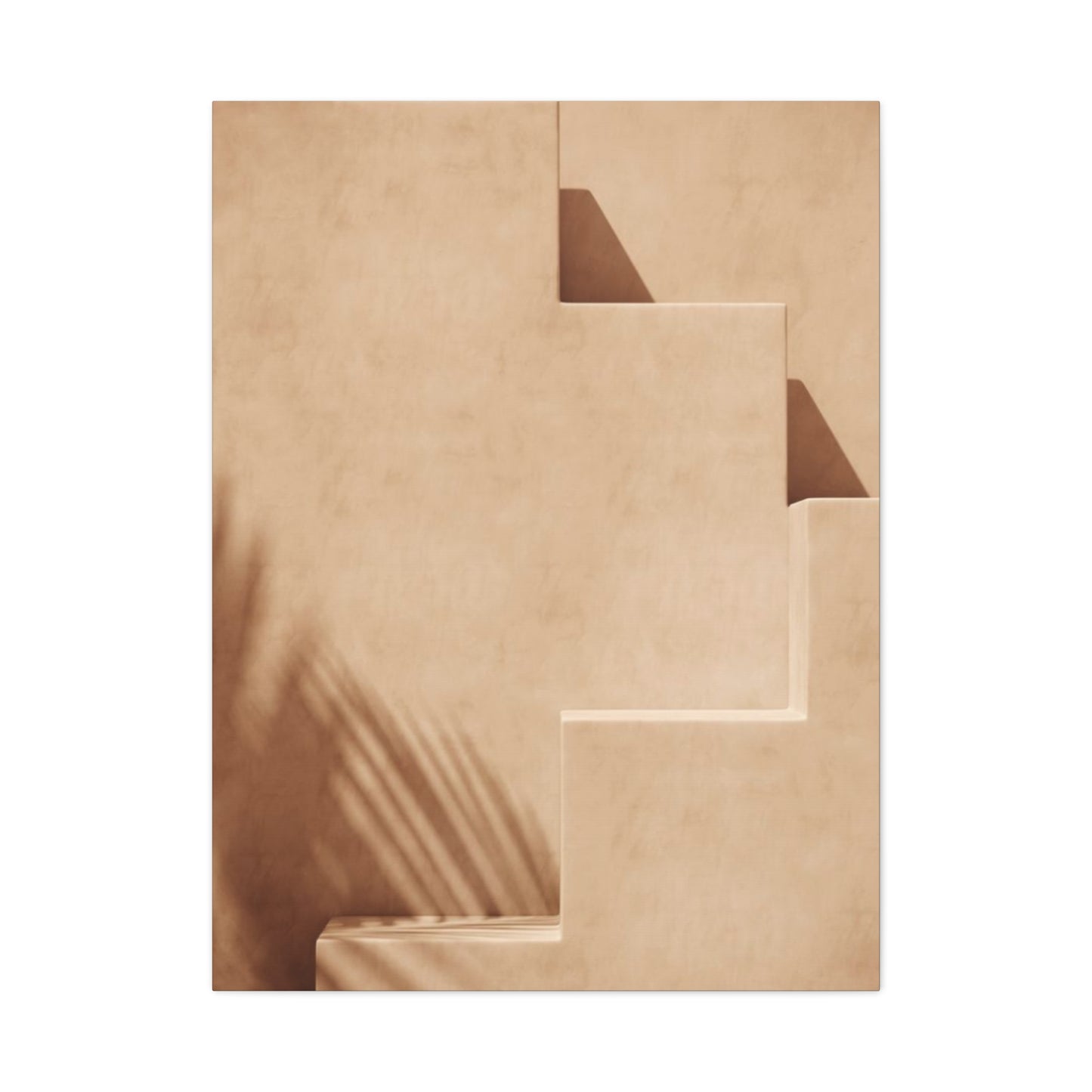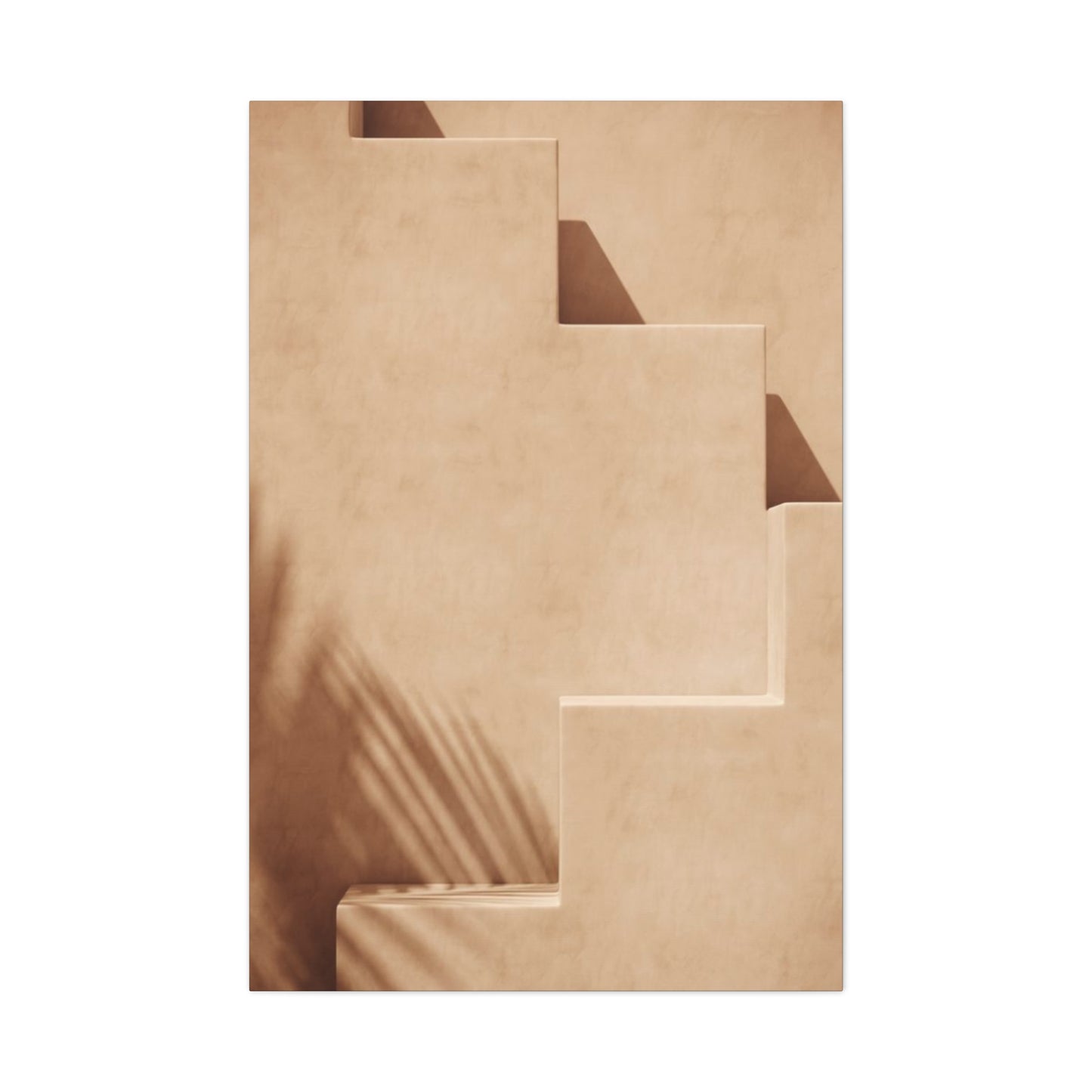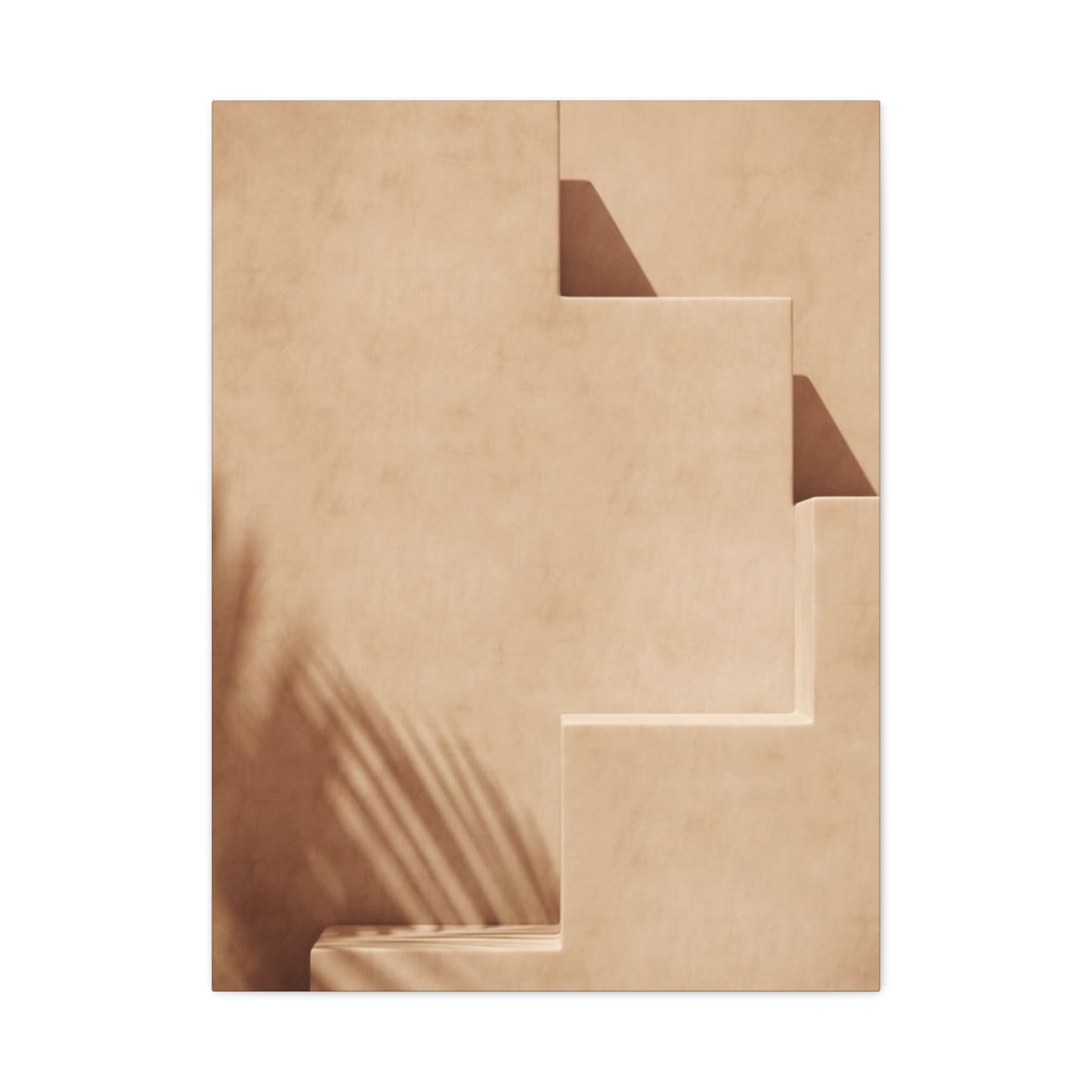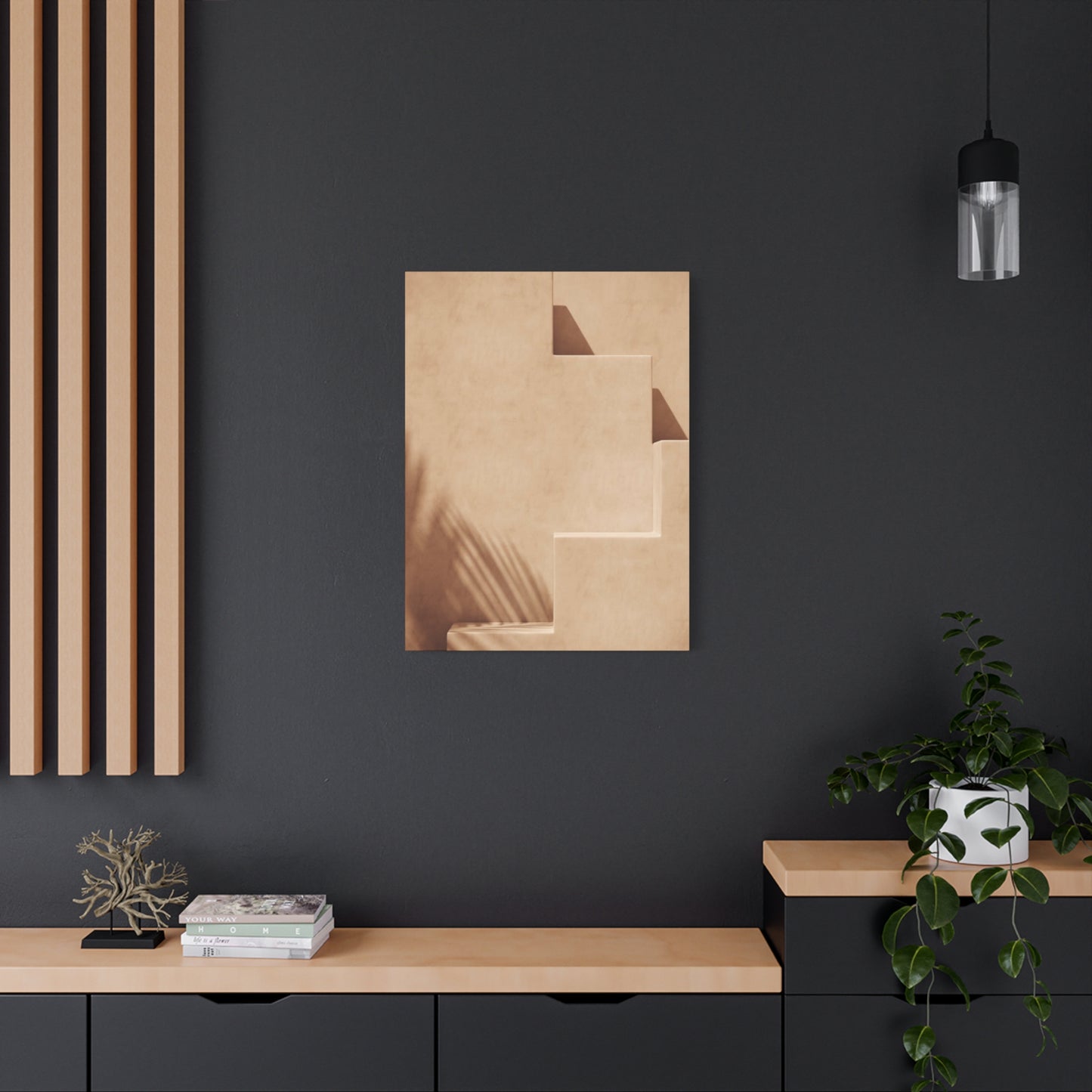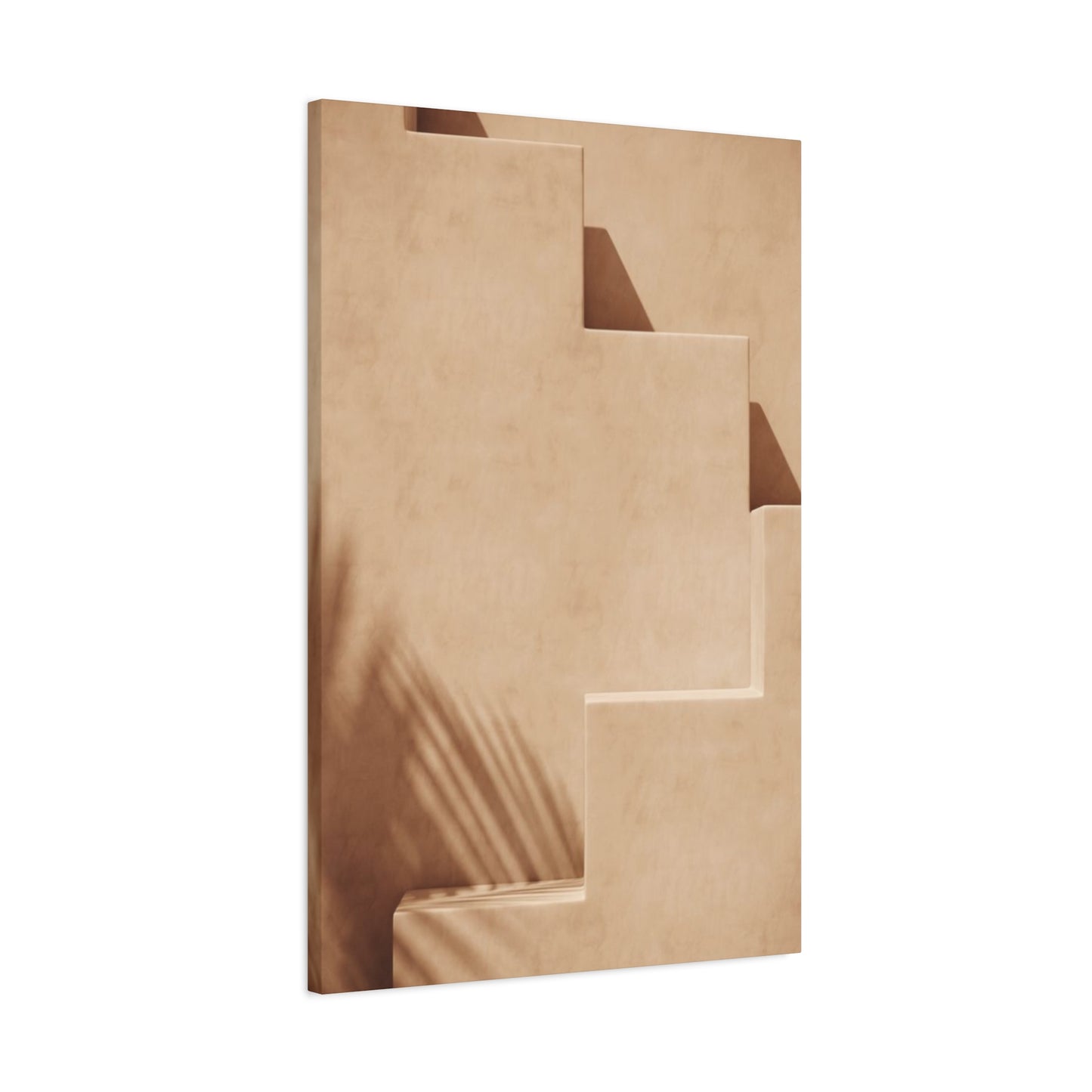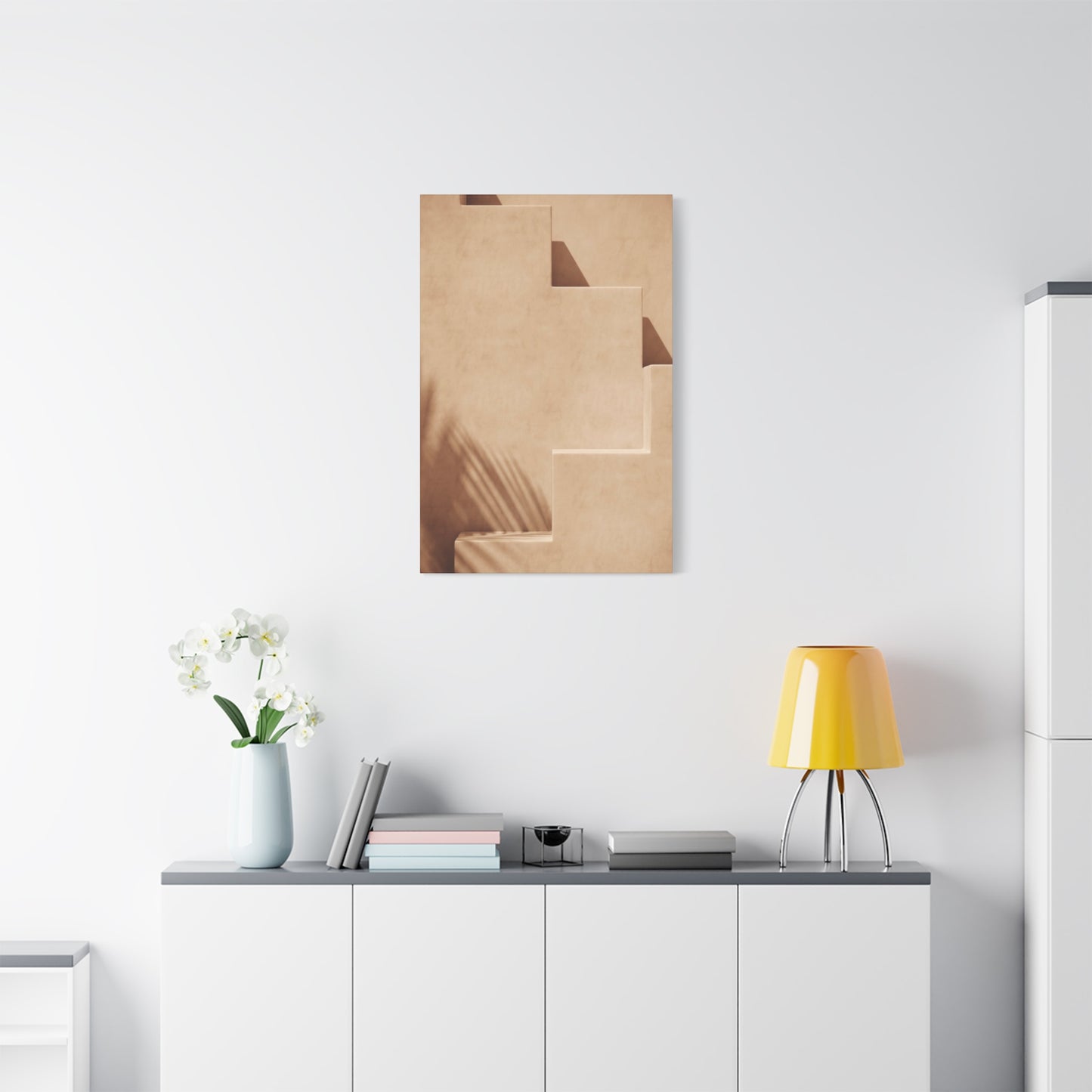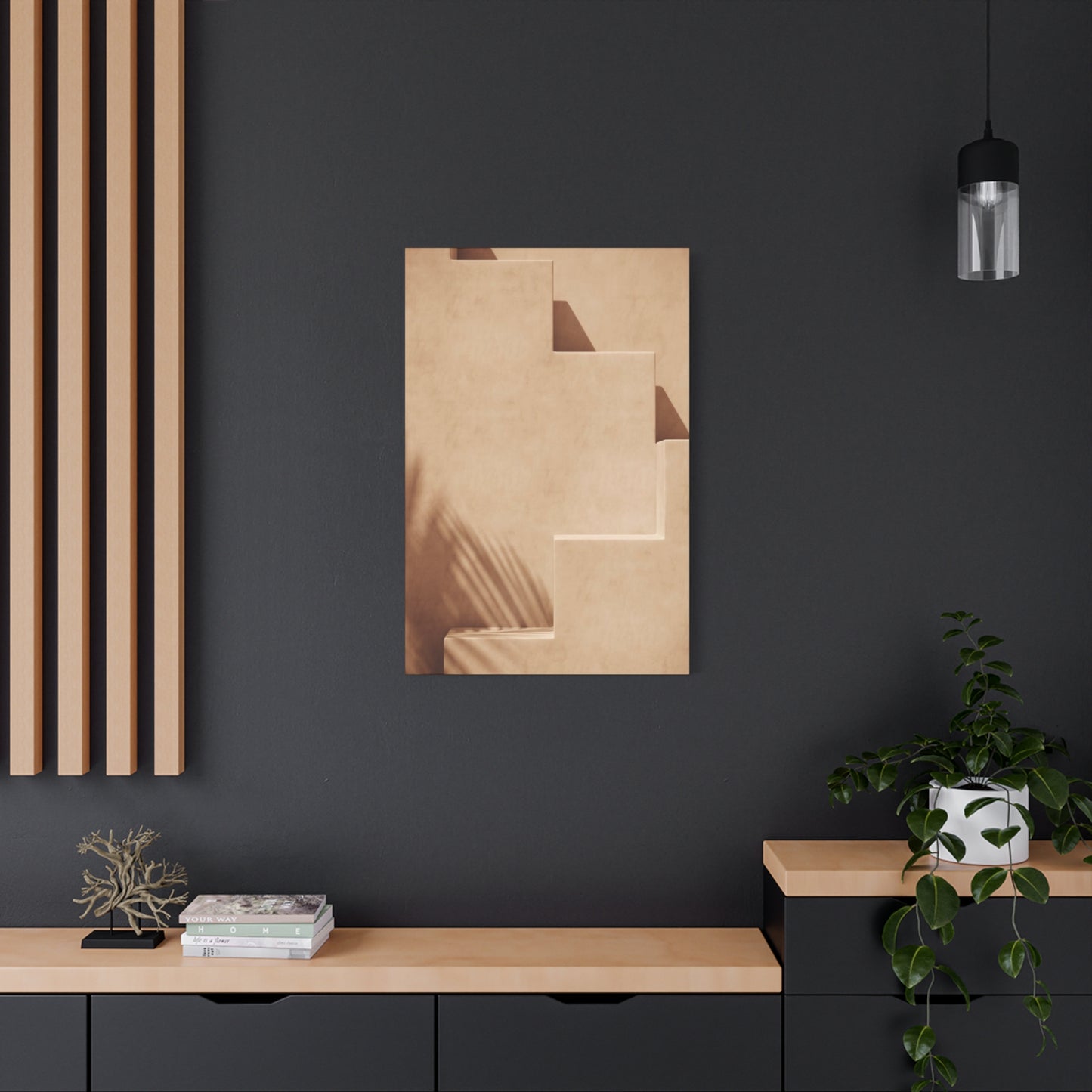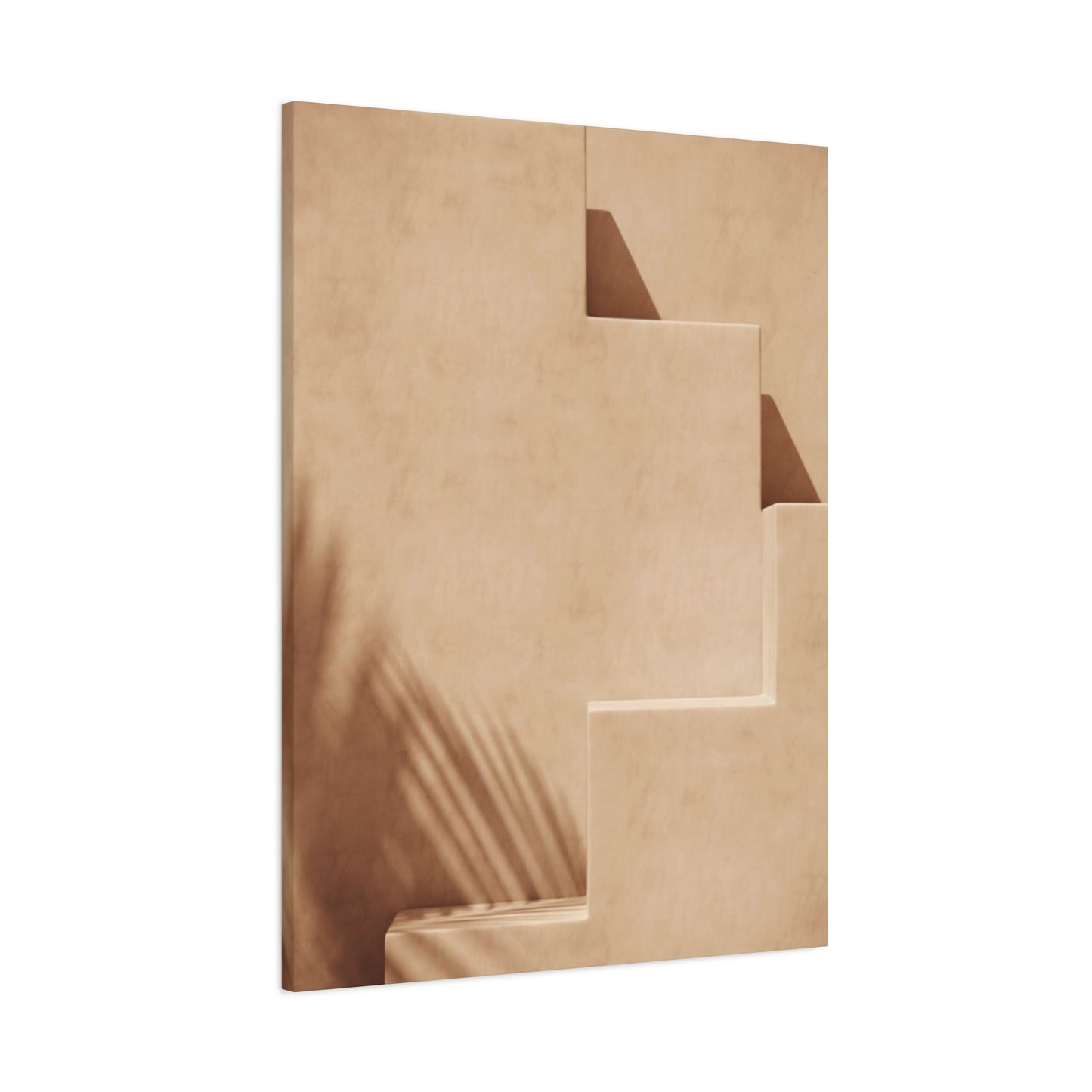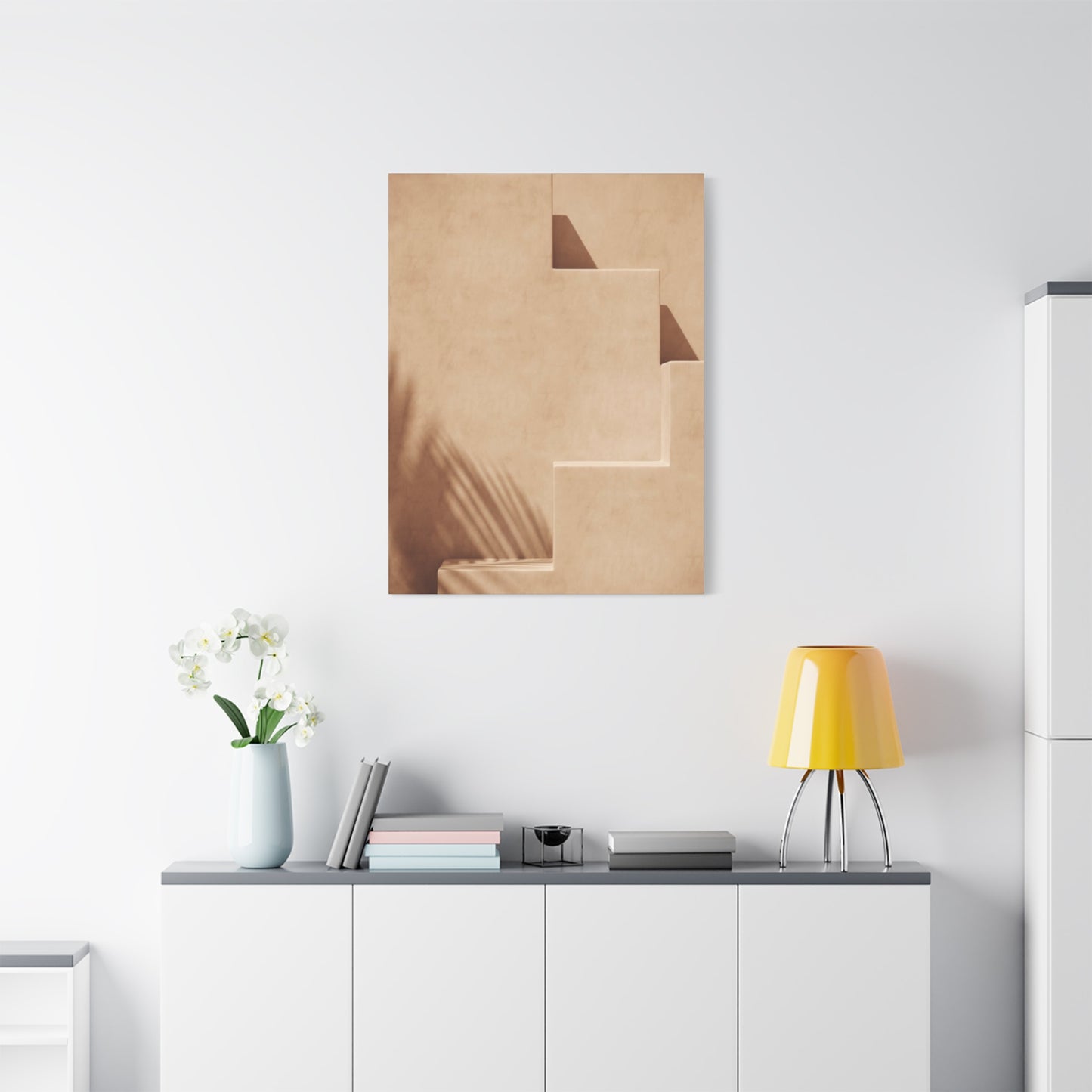Ultimate Interior Styling Guide: Moroccan Wall Art and Staircase Design Harmony
Embark on a journey into a world where functional design converges with timeless artistic tradition. This exploration delves deep into the intricate relationship between stairs architecture, the soul-stirring beauty of Moroccan wall art, and the modern, accessible medium of canvas prints. We will traverse the historical corridors of Moroccan design, understand the structural and aesthetic significance of a staircase, and discover how these elements can be harmoniously blended to create spaces that are not merely transitional but transformational. This is not just about decorating a wall; it is about infusing a home’s very structure with culture, history, and a vibrant artistic spirit. From the mathematical precision of Zellige patterns to the tactile appeal of a gallery-wrapped canvas, we will uncover the principles and inspirations that allow you to turn a simple flight of stairs into a captivating gallery, a personal statement of style that resonates with the rich, warm, and inviting essence of Moroccan heritage.
The Foundational Philosophy of Moroccan Design
Moroccan design is not simply an aesthetic; it is a multisensory experience, a philosophy of living that has been shaped over centuries by a confluence of Berber, Arab, Andalusian, and European cultures. At its core, this design philosophy is rooted in an appreciation for craftsmanship, a deep connection to the natural world, and a desire to create spaces that are both communal and intimately private. It is a style that celebrates complexity and intricacy, yet maintains an overall sense of harmony and balance. The fundamental principle is the creation of an inward-facing sanctuary, a retreat from the outside world. This is most famously embodied in the traditional Moroccan home, the riad, which features an interior garden or courtyard. All rooms open onto this central space, fostering a sense of community and connection to nature while maintaining privacy from the public street.
A Cultural Tapestry Woven into Moroccan Art
The rich and diverse cultural tapestry of Morocco is the primary source of inspiration for its art. Every pattern, every color, and every texture tells a story of historical migrations, ancient trade routes, and spiritual beliefs. The indigenous Berber people, with their deep-rooted traditions and symbolic motifs, provide a foundational layer to this artistic identity. Their use of bold geometric patterns, often seen in textiles and jewelry, represents concepts of life, fertility, and protection. Following the Arab conquests, Islamic art brought with it a profound emphasis on geometric patterns, calligraphy, and arabesques, rooted in the spiritual concept of an infinite and unified creation. The subsequent influence from Moorish Spain, particularly the Andalusian period, introduced a refined elegance, sophisticated tilework (Zellige), and intricate plaster carvings (Gebs) that are now synonymous with Moroccan architecture. European influences, particularly from France and Spain during the colonial era, introduced new materials and stylistic nuances, which were absorbed and reinterpreted within the existing artistic framework. This amalgamation of influences has resulted in a unique visual language that is simultaneously rustic and refined, spiritual and earthly, ancient and timeless. When you introduce Moroccan wall art into your home, you are not just adding a decorative element; you are hanging a piece of this complex and beautiful history on your wall.
The Unique Character of Staircases in Moroccan Architecture
In traditional Moroccan architecture, particularly within riads and kasbahs, the staircase holds a special, often more discreet, role compared to its grand European counterparts. Riads are designed to be inward-facing, with the central courtyard serving as the main event. Consequently, staircases are often tucked away, narrower, and sometimes quite steep, designed to be functional and not to dominate the central space. However, they are never neglected from a design perspective. These staircases are often adorned with the same rich materials found throughout the rest of the dwelling. The steps themselves might be covered in colorful Zellige tiles, and the walls lined with smooth, polished tadelakt plaster, a waterproof lime plaster that gives a soft, subtly glowing finish. The balustrades and railings are frequently made of carved cedar wood or ornate wrought iron, adding a layer of intricate detail. The journey up these stairs is often a journey of discovery, leading from the communal, open courtyard to the private, secluded rooms on the upper floors. The walls along these stairways, though sometimes narrow, provide intimate spaces for art.
An Examination of Materials in Moroccan Staircase Construction
The choice of materials is fundamental to the aesthetic and feel of Moroccan architecture, and this extends to the construction of its staircases. The materials are chosen for their beauty, durability, and connection to the local environment. Tadelakt is one of the most distinctive materials. This traditional lime plaster is mixed with olive soap and polished with a river stone until it develops a smooth, subtly undulating surface that is both waterproof and deeply beautiful. It can be pigmented in a wide range of earthy tones, providing a perfect, seamless backdrop for wall art. Zellige tiles are, of course, a star player. They are often used on the risers of the stairs, creating a ribbon of color and pattern that ascends through the house. Each tile is unique, and their collective effect is breathtaking. Bejmat tiles, which are thicker, rectangular, and unglazed terracotta tiles, are often used for the treads, providing a rustic, non-slip surface that complements the glossier Zellige. Wood, especially aromatic cedar from the Atlas Mountains, is extensively used for railings, newel posts, and sometimes even the entire structure of the staircase. The wood is often intricately carved with traditional geometric or floral motifs. Wrought iron is another key material, skillfully twisted and hammered by artisans to create elaborate balustrades and grilles that allow light to pass through while adding a layer of secure, decorative detail. These natural, handcrafted materials create a tactile and visually rich environment that canvas art can beautifully complement.
The Dance of Light and Shadow on Architectural Stairs
The interplay of light and shadow is a crucial, often overlooked, element in both architecture and art. A staircase, with its angles, planes, and vertical progression, is a natural theater for this interplay. In Moroccan architecture, light is managed with great care. Intricate metal lanterns (fanous) cast complex, lace-like patterns of light and shadow onto surrounding surfaces, creating a dynamic and magical atmosphere. Small, strategically placed windows or skylights in a stairwell can send beams of natural light dancing down the steps, highlighting textures and colors, with the quality of light changing throughout the day. This dynamic environment profoundly affects how we perceive art. A canvas print hung on a staircase wall is not a static object; it is constantly transformed by the shifting light. The texture of the canvas can be highlighted by a raking light from the side, while a direct light from above can make the colors appear more saturated and vibrant. When selecting and placing art, it is essential to consider the lighting, both natural and artificial. Strategic lighting can be used to draw attention to a particular piece, to create a mood, and to enhance the architectural features of the stairwell itself. A well-lit piece of Moroccan wall art can become a beacon, drawing you up the stairs and making the journey a more engaging and visually stimulating experience.
Unifying Moroccan Art with Diverse Architectural Styles
The beauty of Moroccan art is its remarkable versatility. While it is naturally at home in a full-fledged Moroccan-inspired interior, its intricate patterns and vibrant colors can also create a stunning and unexpected contrast in a variety of other architectural styles. In a minimalist or modern home, characterized by clean lines, neutral palettes, and a lack of ornamentation, a single, large-scale Moroccan wall art canvas print can serve as a powerful and soulful focal point. It can introduce warmth, texture, and a sense of history into a space that might otherwise feel cold or impersonal. The geometric precision of Zellige patterns can resonate with the clean geometry of modernism, creating a fascinating dialogue between two different design philosophies. In a bohemian or eclectic interior, Moroccan art feels right at home, adding to the layered, collected, and globally-inspired vibe. It can be mixed with art and textiles from other cultures to create a rich and personal tapestry. In a traditional or rustic home, such as a farmhouse or a Mediterranean-style villa, the earthy tones and handcrafted feel of Moroccan art can complement the natural materials and classic forms of the architecture. The key is to find a common thread, whether it's through color, pattern, or texture, that allows the Moroccan piece to connect with its surroundings while still retaining its unique and captivating character.
Leveraging Moroccan Prints to Accentuate Architectural Qualities
Moroccan canvas prints can be used not just as decorative additions, but as strategic tools to enhance or even alter the perception of a staircase's architectural features. For a long, narrow stairwell that feels like a tunnel, a series of prints featuring expansive Moroccan landscapes or scenes looking through an archway can create a sense of depth and openness, making the space feel wider. For a staircase with a low ceiling, vertically oriented canvas prints can draw the eye upward, creating an illusion of height. The strong vertical lines in a print of a tall minaret or a palm tree can visually "lift" the ceiling. In a stairwell that lacks architectural interest, a bold, large-scale canvas print of a Zellige pattern can create a powerful architectural statement where one doesn't exist. It can function as a "faux" feature wall, adding pattern, color, and a sense of structure. If you have a specific feature you want to highlight, like a beautiful curve in the wall or a niche, placing a carefully chosen piece of art there will naturally draw attention to it. By thinking about the inherent qualities of your staircase—its height, width, light, and flow—you can select Moroccan prints that work with the architecture to create a more dynamic, engaging, and spatially intelligent design.
A Guide to Different Types of Canvas Prints for Your Space
Understanding the different presentation styles of canvas prints can help you choose the perfect one for your staircase architecture and overall decor. The most popular style is the gallery-wrapped canvas. In this method, the canvas is stretched around a wooden frame (stretcher bars) and stapled on the back, so the image continues around the edges of the frame. This creates a clean, modern, and three-dimensional look that doesn't require an external frame, allowing the art itself to take center stage. You can choose to have the edges be a continuation of the image, a mirrored reflection of the edge of the image, or a solid color (often black or white). A framed canvas print offers a more traditional and polished look. The stretched canvas is set inside an external frame, often a "floater frame," which leaves a small gap between the edge of thecanvas and the frame, creating the illusion that the canvas is floating. This adds a defined border and a sense of finish to the artwork. Split canvas prints, also known as multi-panel prints, involve a single image divided across multiple canvas panels. This style is excellent for large walls and creates a contemporary, dynamic effect that can emphasize the sense of movement and rhythm along a staircase. Choosing the right style depends on your personal taste and the aesthetic you wish to create, from sleek and modern to classic and refined.
The Critical Impact of Scale: Choosing the Right Canvas Print Size
The size of your canvas print is one of the most critical decisions you will make, as scale can dramatically alter the impact of the artwork and the feel of the entire space. A common mistake is choosing art that is too small for the wall. On a large, expansive staircase wall, a small print will look lost and insignificant, diminishing its intended effect. A good rule of thumb is that the artwork or gallery grouping should occupy roughly two-thirds of the available wall space. Before you buy, it's a great idea to mock up the size on your wall. You can do this by cutting out pieces of paper or cardboard to the dimensions of the canvas prints you are considering and temporarily taping them to the wall. This allows you to step back and get a real sense of the scale and how it feels in the space. For a main landing or the largest section of the stairwell wall, don't be afraid to go big. A large, oversized canvas can create a powerful, museum-quality statement. For a gallery wall arrangement, ensure the entire grouping functions as one cohesive visual unit, maintaining consistent spacing between the frames. Considering scale is not just about filling space; it's about creating a balanced and proportional composition that feels intentional and harmonious with the architecture.
Capturing a Mosaic of Color: Zellige Tile Patterns on Canvas
Zellige tile patterns are one of the most captivating and popular subjects for Moroccan wall art, and for good reason. They are a perfect storm of color, mathematics, and history. A canvas print that accurately captures a Zellige pattern brings the essence of this ancient craft into your home without the need for a costly and permanent tile installation. High-resolution photography can capture the subtle imperfections and variations in glaze on the surface of each hand-cut tile, preserving the handcrafted soul of the original work. These prints can range from hyper-realistic depictions of an entire tiled wall to more abstract compositions that focus on a small, repeating section of a pattern. The geometric nature of Zellige makes it incredibly versatile. A print with a bold, multi-colored star pattern can be a vibrant, energetic centerpiece, perfect for a lively, eclectic home. A print featuring a more monochromatic pattern, perhaps in shades of sea green or cream, can provide a subtle, textural backdrop that adds interest without overwhelming a more serene and minimalist space. These patterns create a sense of rhythm and order, making them particularly well-suited for the measured, rhythmic progression of a staircase. A Zellige-inspired canvas print is a celebration of precision and artistry, a nod to a tradition that has turned mathematics into breathtaking beauty.
The Allure of Intricate Archways and Doorways of Morocco
Moroccan archways and doorways are powerful architectural symbols, representing a passage from one world to another—from the public to the private, the mundane to the sacred. A canvas print depicting one of these iconic structures can bring this sense of mystery and invitation into your own home. The horseshoe arch, with its distinct, rounded shape that extends beyond a semi-circle, is the most recognizable form. It creates an elegant, graceful frame for whatever lies beyond. A canvas print that captures a view through an archway into a sun-drenched courtyard or a lush garden can create a wonderful illusion of depth on a flat wall, making a space feel larger and more open. The doorways themselves are often works of art, crafted from heavy, carved cedar wood and adorned with intricate metalwork, including heavy knockers and decorative studs. A print that focuses on the details of one of these doors—the texture of the aged wood, the patina on the metal, the complexity of the carvings—can add a rich, tactile element to your decor. Hanging a canvas print of a Moroccan archway or doorway at the top of a staircase can be particularly symbolic, suggesting the arrival at a special, private sanctuary on the upper floor of your home.
Capturing the Glow on Canvas: Moroccan Lanterns and Light
Light is a living element in Moroccan design, and the primary vessel for shaping it is the Moroccan lantern. These lanterns, crafted from metals like brass, copper, or silver, are perforated with intricate, hand-cut patterns. When a candle or bulb is lit inside, they project mesmerizing, lace-like shadows onto the surrounding walls, transforming a simple room into a magical, atmospheric space. A canvas print that captures this effect can bring that same sense of wonder and ambiance to your stairwell, even without the physical lantern. Imagine a print that depicts a dark, moody scene, with the main subject being the intricate patterns of light cast from an unseen source. This type of artwork is all about atmosphere and emotion. Another approach is to feature the lantern itself as the subject. A detailed photograph of a beautifully crafted brass lantern, with its warm metallic tones and complex fretwork, can be a stunning piece of art. It celebrates the craftsmanship and artistry of the metalworkers. Prints that capture the glow of multiple lanterns in a bustling souk at dusk can add a sense of energy, warmth, and exoticism. This theme of light and shadow is particularly effective in a stairwell, where the lighting is often more subdued, allowing the glowing, atmospheric qualities of the canvas print to truly shine and create an intimate, inviting journey between floors.
Interpreting Berber Symbols and Their Meanings in Art
Diving deeper into the visual language of Morocco, Berber symbols offer a connection to the ancient, indigenous roots of North African culture. These are not just abstract shapes; they are a pictographic language rich with meaning, passed down through generations, primarily in the arts of weaving, pottery, and jewelry. A canvas print that incorporates these symbols brings a layer of authentic, tribal storytelling to your walls. The Tifinagh alphabet, the traditional script of the Berber languages, has a strong, graphic quality that can be beautifully rendered in art. The diamond shape, as mentioned, is a potent symbol of femininity and the womb, often used in wedding blankets and textiles to wish for fertility and a happy home. The chevron or zigzag pattern can represent the serpent, a symbol of life, health, and spiritual renewal. A simple cross shape often symbolizes the eye of the chameleon, believed to possess protective powers. When you choose a canvas print featuring these symbols, you are doing more than just selecting a pattern; you are engaging with a deep cultural narrative. This art can serve as a conversation starter, a connection to a primeval past, and a carrier of positive symbolism, infusing your architectural space with more than just beauty, but also with meaning and protective energy.
Saharan Landscapes and Kasbah Silhouettes on Canvas
For a more serene and organic take on Moroccan art, canvas prints depicting the country's breathtaking landscapes offer a wonderful alternative to intricate patterns. The Sahara Desert, with its vast, undulating dunes of golden sand, provides a minimalist and deeply calming subject. A panoramic canvas of a desert scene at sunrise or sunset, with its soft, warm light and long shadows, can bring a sense of immense peace and spaciousness to a wall. This is particularly effective for making a narrow stairwell feel more open and expansive. On the other edge of the desert stand the majestic kasbahs and ksour, fortified earthen citadels that rise dramatically from the landscape. A canvas print of a famous kasbah, like Aït Benhaddou, with its geometric towers and reddish-brown clay walls glowing in the late afternoon sun, evokes a sense of history, resilience, and romantic adventure. The strong, blocky, architectural forms of a kasbah can create a powerful visual anchor on a large wall, their rustic texture and earthy tones providing a grounding influence. These landscape and architectural prints offer a different kind of Moroccan experience—one that is less about interior ornamentation and more about the raw, majestic beauty of the land and its ancient structures, providing a window to another world from the comfort of your own staircase.
Mastering the Art of the Staircase Gallery Wall
A gallery wall is a fantastic way to display a collection of smaller canvas prints and create a highly personal and dynamic feature on your staircase. The key to a successful staircase gallery wall is planning and balance. First, lay out all your chosen pieces on the floor to experiment with arrangements before you put any nails in the wall. You want the collection to feel cohesive, even if the individual pieces are different. You can achieve cohesion through a common theme (e.g., all architectural details), a consistent color palette (e.g., all prints with a touch of green), or uniform framing (e.g., all in simple black floater frames). When hanging on a staircase, the most common method is to follow the upward angle of the stairs. You can establish a diagonal baseline that runs parallel to the handrail and arrange your frames around it. Maintain consistent spacing between each piece, typically two to three inches, to create a clean, organized look. The center of the entire grouping should be at average eye level, which on a staircase means you should consider the eye level from the middle steps. Don't be afraid to mix sizes and orientations (vertical and horizontal) to create visual interest. A well-curated gallery wall turns your staircase into a visual diary, telling a story about your tastes, travels, and inspirations.
Illuminating Your Art: Lighting a Staircase for Maximum Impact
Proper lighting is essential to bring your staircase art to life. Poor lighting can leave your beautiful canvas prints in shadow, while harsh lighting can create glare and wash out the colors. The goal is to provide even, directed illumination that highlights the artwork without overpowering the space. For a large statement piece, a dedicated picture light mounted on the wall above the canvas is an excellent option. These come in various styles and finishes and provide focused light directly onto the artwork. For a gallery wall, track lighting installed on the ceiling is a versatile solution. The individual heads on the track can be aimed and focused on each piece of art, allowing for precise control. Wall sconces placed strategically along the staircase can provide both ambient light for the stairs and accent lighting for the art. When choosing bulbs, look for those with a high Color Rendering Index (CRI), ideally 90 or above. A high CRI means the light will render the colors of your artwork accurately and vibrantly. Also, consider the color temperature of the light. A warm white (around 2700K-3000K) is generally preferred for homes, as it creates a cozy and inviting atmosphere that complements the warm palettes often found in Moroccan art. Thoughtful lighting will transform your staircase from a simple passageway into a beautifully curated and dramatic gallery space.
Creating a Cohesive Look with Other Moroccan Decor
To create a truly immersive and cohesive Moroccan-inspired space, your canvas prints should be part of a larger design conversation with other decorative elements. The art on the wall can serve as the inspiration for the colors and textures used in the rest of the area. For example, if your canvas print features deep blues and terracotta oranges, you can echo these colors in a runner on the stairs, a decorative pot on the landing, or even the paint color on an accent wall. Textiles are key to the Moroccan aesthetic. Consider adding a few Moroccan floor poufs near the bottom of the staircase or draping a hand-woven textile with Berber patterns over the railing. A traditional Moroccan rug at the base or top of the stairs can anchor the entire space and tie all the elements together. Don't forget the power of plants. Large potted palms or ferns can add a touch of the oasis and bring life and organic texture to the stairwell. The goal is not to create a theme park, but to layer these elements thoughtfully so that the space feels collected, authentic, and harmonious. Your Moroccan wall art canvas print should feel like the jewel in a beautifully set crown, the focal point in a well-orchestrated design.
Contemporary Moroccan Artists Reinterpreting Tradition
While traditional crafts form the bedrock of Moroccan aesthetics, a vibrant contemporary art scene is also flourishing in the country, with modern artists who are reinterpreting their heritage in exciting and innovative ways. These artists often use traditional motifs, techniques, and concepts as a starting point for exploring complex themes of identity, globalization, and social change. Some artists might use the geometric language of Zellige but render it in unexpected materials or on a monumental scale. Others might incorporate Arabic calligraphy into mixed-media works or abstract paintings. Photographers are capturing modern-day life in the medinas and mountains, offering a fresh perspective that moves beyond the romanticized orientalist gaze of the past. By engaging with the work of contemporary Moroccan artists, we see that the country's artistic tradition is not a static relic but a living, breathing entity that is constantly evolving. A canvas print of a contemporary Moroccan artwork can be a powerful addition to a home, offering a vision that is rooted in history but speaks to the present moment. It creates a fascinating dialogue between the ancient and the modern, and showcases the dynamic creativity that continues to emerge from this culturally rich nation.
The Ever-Expanding Global Appeal of Moroccan Decor
The appeal of Moroccan decor has transcended its geographical origins to become a beloved and enduring style in interior design worldwide. Its popularity can be attributed to several factors. In an increasingly homogenized world, Moroccan design offers a powerful dose of authenticity, character, and soul. Its emphasis on handcrafted items and natural materials resonates with a growing desire for unique, meaningful objects over mass-produced ones. The style is also incredibly inviting and comfortable. The use of warm colors, soft textiles, and layered textures creates spaces that feel cozy, relaxing, and conducive to social gatherings. Moroccan decor speaks to a sense of wanderlust and romantic escapism, allowing people to bring a touch of exotic adventure and worldly sophistication into their own homes. This aesthetic is also highly adaptable. As we've explored, elements of Moroccan design can be integrated into almost any interior style, from minimalist to bohemian, allowing for a wide range of personal expression. The rise of social media and design blogs has further amplified its reach, making its iconic patterns and vibrant interiors instantly recognizable and desirable to a global audience. A Moroccan canvas print is a perfect entry point into this world, an accessible way to capture the essence of this timeless and universally appealing style.
The Spiritual Dimension of Islamic Geometric Art
The intricate geometric patterns found in much of Moroccan art are more than just complex decoration; they are imbued with a deep spiritual dimension rooted in Islamic tradition. The three core elements of Islamic art are geometry, calligraphy, and the arabesque (floral patterns). The focus on non-representational art stems from a belief that the creation of living forms is God's domain alone. Instead of depicting the world, the art seeks to represent the underlying spiritual order and clarity of the universe. The geometric patterns, which can be extended infinitely in any direction, are a visual metaphor for the infinite, omnipresent, and unified nature of Allah. The creation of these patterns begins with a simple circle, from which a complex grid of stars and polygons can be derived, symbolizing unity and the origin of all life from a single source. Engaging with these patterns is intended to be a contemplative act. By following the intricate lines and repeating shapes, the mind is quieted, moving from the distraction of the material world to a meditation on universal principles and divine harmony. When you hang a canvas print of a Zellige or Girih pattern on your wall, you are introducing an element that is designed to bring not just visual beauty, but also a sense of peace, order, and spiritual reflection to your home.
Appreciating the Maâlem: The Artisans Behind the Aesthetics
Behind every intricate Zellige wall, every carved wooden screen, and every hammered metal lantern is a maâlem—a master artisan. In Moroccan culture, these artisans are held in high esteem, possessing a level of skill and knowledge that is often passed down through family lines for centuries. Becoming a maâlem is a lifelong journey of dedication and practice, starting from a young age as an apprentice, learning to master the tools, materials, and complex mathematical principles of their craft. The maâlem of Zellige, for example, must not only know how to cut the tiles into hundreds of tiny, precise shapes (furmah) but also how to lay them out, face down, in reverse, to form the final intricate pattern—a feat of memory and spatial reasoning. The maâlem of Gebs (plaster carving) carves directly into wet plaster on the wall, working quickly and with incredible precision to create delicate, lace-like patterns. This deep-seated culture of craftsmanship emphasizes patience, precision, and a profound respect for the materials. While a canvas print is a modern reproduction, choosing one that celebrates this craftsmanship is a tribute to the human skill and artistic soul embodied by the maâlem. It serves as a reminder of the value of handmade beauty in a world dominated by machine production.
Understanding Resolution for High-Quality Large Canvas Prints
When selecting a canvas print, especially a large one destined for a prominent staircase wall, understanding image resolution is paramount. Resolution refers to the amount of detail an image holds, typically measured in dots per inch (DPI) for printing. For a canvas print to look sharp, crisp, and detailed up close, the source digital file must have a high resolution. A low-resolution image, when enlarged to a big canvas size, will appear pixelated, blurry, and unprofessional, completely undermining the artistic effect. As a general rule, the ideal printing resolution is 300 DPI at the final print size. However, for very large canvases that will be viewed from a distance (like on a tall stairwell wall), a resolution of 150 DPI can still produce excellent results. Reputable sellers of canvas prints will always use high-resolution source files to ensure their products are of the highest quality. If you are ever considering creating a custom canvas from your own photograph of a Moroccan scene, it is crucial to use a camera that can capture high-resolution images and to avoid over-cropping the photo, as this reduces the total number of pixels available for printing. Investing in a high-resolution print ensures that the intricate details of the Zellige patterns, the texture of the tadelakt, and the fine lines of the calligraphy are all rendered with stunning clarity.
A Deeper Look at Canvas Material and Frame Construction
The physical quality of the canvas and its supporting frame are just as important as the print quality itself. Not all canvases are created equal. The material is typically a blend of cotton and polyester. A poly-cotton blend is often preferred as it offers the best of both worlds: the natural, textured feel of cotton and the strength and stability of polyester, which helps prevent sagging over time. The weight of the canvas, measured in grams per square meter (GSM), is also an indicator of quality; a heavier canvas is more durable. The frame that the canvas is stretched over is called the stretcher bar frame. These bars should be made from a solid, kiln-dried wood, like pine, to prevent warping or bowing over time. The thickness of the stretcher bars (the depth of the canvas from the wall) can also affect the look. A standard depth is around 0.75 inches, while a thicker, "gallery" depth of 1.5 inches gives the canvas a more substantial, three-dimensional presence on the wall. A well-constructed frame will have tight, clean corners and a tautly stretched canvas. These construction details ensure the longevity and structural integrity of your artwork, making it a lasting feature of your home's architecture.
The Surprising Acoustic Benefits of Canvas Art in Stairwells
Stairwells, with their hard, parallel surfaces and high ceilings, can often act as echo chambers, amplifying sound and creating a noisy, cavernous environment. One of the surprising and often overlooked benefits of hanging large canvas prints in these spaces is their ability to improve acoustics. A stretched canvas acts as a sound-absorbing panel. Unlike a hard, reflective surface like glass-framed art or a bare wall, the fabric of the canvas and the air gap between it and the wall help to trap and dampen sound waves. This reduces echo and reverberation, making the space feel quieter, calmer, and more pleasant. A single large canvas can make a noticeable difference, and a gallery wall of multiple canvases can have a significant acoustic impact. This is particularly beneficial in homes with an open floor plan where the stairwell is connected to the main living areas. By improving the sound quality of this central transitional space, you can enhance the acoustic comfort of the entire home. This functional benefit adds another compelling reason to adorn your staircase with beautiful Moroccan wall art, as it pleases not only the eyes but also the ears.
Exploring Sustainable and Eco-Friendly Options in Canvas Printing
As consumers become more environmentally conscious, the demand for sustainable and eco-friendly art and decor options is growing. The world of canvas printing is responding to this demand with greener alternatives. When seeking a sustainable option, look for canvases made from natural materials like 100% cotton or hemp, or those that incorporate recycled content. The stretcher bar frames should be made from wood sourced from sustainably managed forests, certified by organizations like the Forest Stewardship Council (FSC). The printing process itself can also be more eco-friendly. Many printers now use water-based latex or archival pigment inks, which have a lower environmental impact than solvent-based inks, as they do not release harmful volatile organic compounds (VOCs) into the atmosphere. Additionally, look for companies that practice sustainable production methods, such as printing on demand to reduce waste, using recycled packaging materials, and minimizing their carbon footprint through efficient operations. By choosing an eco-friendly Moroccan canvas print, you can be confident that the beautiful art enhancing your home was created with respect for the planet, aligning your aesthetic choices with your environmental values.
Coordinating Stairwell Art with Living Room Decor
If your staircase is visible from your main living room, it is crucial that the art and decor of the two spaces speak to each other. The staircase art should not feel like a separate, isolated statement but rather an extension of the living room's aesthetic. This coordination can be achieved through color. Pull an accent color from your living room—perhaps from a throw pillow, a rug, or a piece of furniture—and make sure that color is present in the Moroccan canvas print you choose for the stairs. This creates an immediate and powerful visual link. You can also coordinate through theme or texture. If your living room has a global, eclectic feel, the Moroccan art will fit in naturally. If your living room is more modern, choose a Moroccan print that has a strong graphic or abstract quality to complement the clean lines of the space. The frame of the canvas print can also be a unifying element; for instance, a black floater frame on the canvas can echo black metal accents or window frames in the living room. This thoughtful coordination ensures that the view from your living room is harmonious and intentional, with the staircase art serving as a beautiful backdrop and an integral part of the overall design scheme.
The Impact of Moroccan Art in Entryways and Foyers
The entryway or foyer is the first impression your home makes on guests, and it sets the tone for the entire house. Placing Moroccan art in this area, especially at the base of a staircase, creates an immediate sense of warmth, hospitality, and worldly sophistication. A large, vibrant canvas print can be a stunning focal point, instantly drawing the eye and sparking conversation. It communicates a sense of bold personal style and an appreciation for art and culture. In a smaller entryway, even a single, beautifully chosen piece can make a significant impact. A print of an ornate Moroccan doorway, for example, can be a symbolic and welcoming gesture. Paired with a simple console table, a decorative bowl, and perhaps a small plant, it creates a curated vignette that feels both elegant and inviting. The rich colors and intricate patterns inherent in Moroccan art are excellent at masking the scuffs and marks that are common in a high-traffic entryway, making it a practical as well as a beautiful choice. Starting the Moroccan theme in the foyer and carrying it up the staircase creates a powerful and cohesive design narrative from the moment someone steps through your front door.
Creating a Cohesive Visual Flow Throughout the Home
The ultimate goal of a well-designed home is to create a cohesive visual flow, a sense of unity that makes all the individual spaces feel connected. Using a consistent theme, like Moroccan-inspired decor, is an excellent way to achieve this. Your staircase art can serve as the central anchor for this theme. The colors, patterns, and motifs found in your canvas prints can be subtly repeated in other rooms. A blue from your Zellige print could reappear as the color of a vase in the dining room. The geometric pattern could be echoed in the embroidery on a pillow in the bedroom. This doesn't mean every room needs to be a full Moroccan theme; rather, it's about scattering these related elements throughout the house to create a subtle, recurring thread that ties everything together. This approach makes the home feel intentional and harmonious, as if every object and color was chosen with the whole picture in mind. The journey through the house becomes a journey of discovery, noticing these small connections that create a larger, unified, and deeply personal aesthetic.
Weaving Moroccan Patterns into Other Textures and Textiles
To create a rich, layered, and authentic Moroccan feel, it is essential to look beyond the walls and incorporate patterns into other textures and textiles. A canvas print, with its own unique texture, is a great starting point, but the effect is amplified when complemented by other materials. Consider a wool Berber rug at the foot of the stairs, its plush pile and diamond-shaped patterns adding both physical and visual warmth. Add a selection of floor cushions or poufs covered in kilim fabrics or leather with intricate embroidery. Throw blankets draped over a bench or chair can introduce another layer of pattern, perhaps a classic stripe or a complex geometric weave. Even curtains can play a role; a sheer panel with a subtle arabesque print can filter light beautifully. The key is to mix these textures and patterns with confidence. Don't be afraid to layer a patterned rug with patterned pillows. The Moroccan aesthetic is one of maximalism and abundance. This interplay of different textures—the smooth weave of the canvas, the plushness of the wool, the roughness of the kilim—creates a sensory-rich environment that is the hallmark of true Moroccan design.
Architectural Art for Other Key Areas of the Home
The concept of using art to enhance architecture is not limited to the staircase. The principles we have discussed can be applied to other key areas of the home to create stunning focal points and a cohesive design. A large wall in a dining room is a perfect canvas for a dramatic, oversized piece of architectural art, such as a print of the intricate muqarnas ceiling of a Moroccan palace. This can create a sense of grandeur and occasion, elevating every meal. In a bedroom, a serene and calming print of a peaceful riad courtyard hung above the bed can create a tranquil sanctuary for rest. Even a long, plain hallway can be transformed into a gallery by lining it with a series of smaller, themed prints, making the journey from one room to another an artistic experience. In a home office, a print featuring the mathematical precision of an Islamic geometric pattern can inspire focus and creativity. By identifying the key architectural planes and transitional zones in your home, you can strategically place art to enhance the space, tell a story, and infuse every corner with beauty and personality.
Conclusion:
Our extensive journey has traversed the intricate pathways where stairs architecture converges with the soulful vibrancy of Moroccan wall art, all made accessible through the modern medium of canvas prints. We have seen that a staircase is far more than a functional structure; it is a dynamic, vertical gallery, a central artery of the home that offers a unique canvas for self-expression. It is a space of movement and transition, and the art we place within it has the profound ability to transform that daily journey into a moment of beauty, contemplation, and cultural connection. We delved into the heart of Moroccan design, understanding that its philosophy is rooted in creating an inward-facing sanctuary, a principle that harmonizes beautifully with the idea of a home as a personal retreat.
The rich tapestry of Berber, Arab, and Andalusian influences has gifted the world a visual language of unparalleled depth—a language spoken through the mathematical poetry of Zellige, the warm glow of a brass lantern, the symbolic power of a Berber motif, and the inviting curve of a horseshoe arch. Choosing to adorn your home with Moroccan wall art is an act of storytelling. It is a decision to infuse your personal space with a narrative of ancient craftsmanship, spiritual depth, and vibrant cultural history. The canvas print serves as the perfect modern storyteller—durable, texturally rich, and capable of capturing every nuance of color and detail with breathtaking fidelity. Whether you opt for a single, monumental statement piece or a curated gallery wall that unfolds a narrative as you ascend, you are engaging in a timeless tradition of using art to elevate architecture.
You are transforming a simple wall into a window to another world, a source of daily inspiration that turns the functional act of moving through your home into an experience of aesthetic delight. Ultimately, the fusion of stairs architecture and Moroccan wall art canvas prints is about creating a home that is not just beautifully decorated, but deeply and personally resonant. It is about building a space where every element, from the grand sweep of the staircase to the intricate pattern on a canvas, works in concert to reflect your unique taste, your appreciation for global culture, and your belief in the power of art to enrich everyday life. It is a celebration of the journey—both the physical journey up the stairs, and the personal journey of creating a home that is a true and beautiful reflection of you.

















